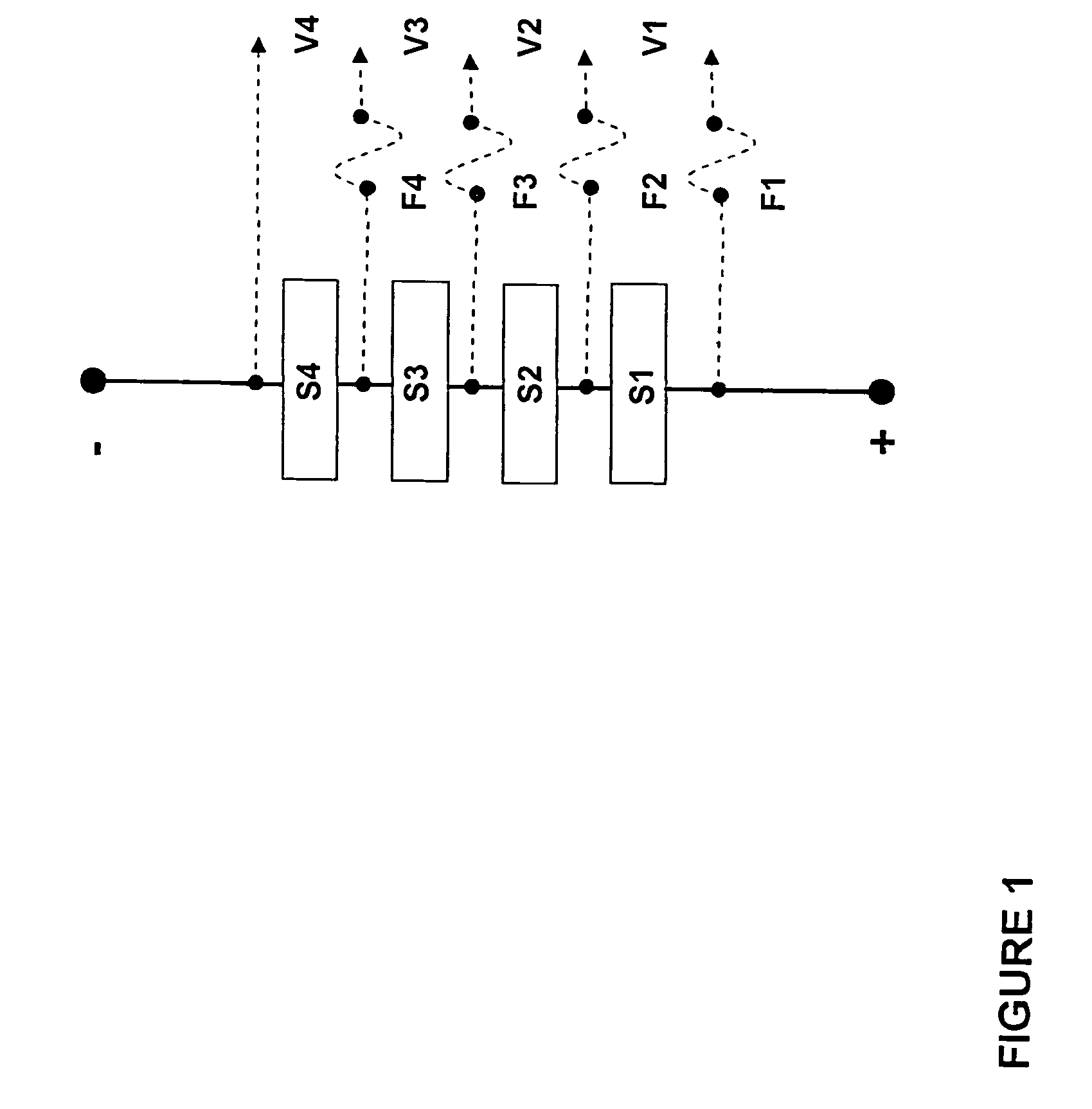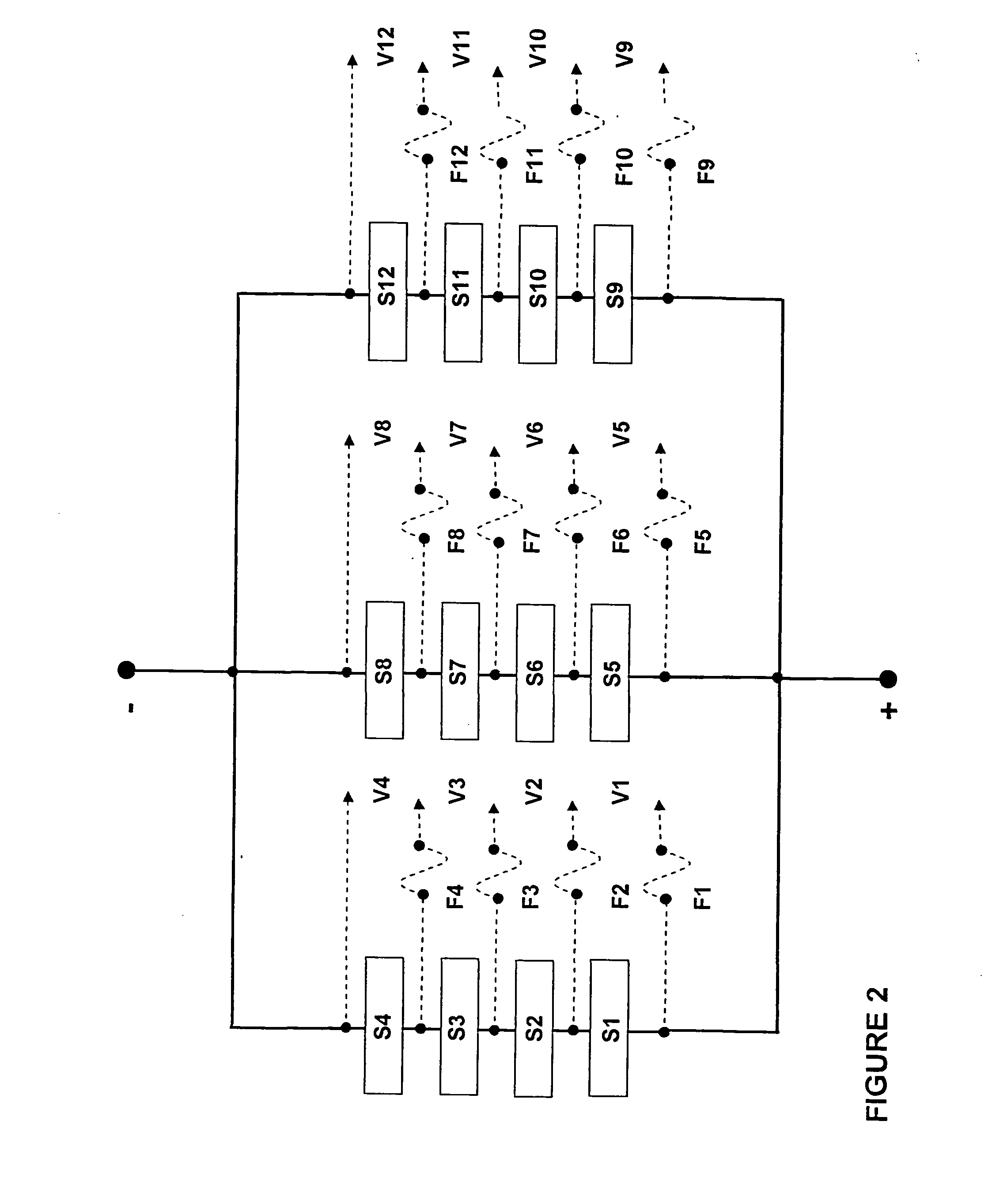Electrical connecting device for rechargeable electrochemical energy storage system
a technology of electrochemical energy storage and electric connection, which is applied in the direction of electric vehicles, electrical equipment, charge equalisation circuits, etc., can solve the problems of increasing the weight of the entire energy storage system, reducing the reliability of the energy storage system, and reducing the reliability of the entire system, so as to increase the reliability and calendar life, the effect of reducing the cos
- Summary
- Abstract
- Description
- Claims
- Application Information
AI Technical Summary
Benefits of technology
Problems solved by technology
Method used
Image
Examples
example 1
Three regular 12.5 V / 0.9 Ah sub-units, S1-S3, and one weakened 12.5 V / 0.9 Ah sub-unit S4 were connected in series and in parallel according to the arrangement illustrated in the insert in FIG. 6 to form a 25 V / 1.8 Ah rechargeable electrochemical energy storage system. Inclusion of a sub-unit with one weakened cell simulates a battery, in which one sub-unit displays a higher resistance, particularly towards the end of charge, and slightly different charge and discharge characteristics. A first sheet of nickel foam of 500 cm2 size was placed on the bottom of a first string terminal plate of positive polarity, consisting of 1 mm thick aluminum of 500 cm2 size, with a 20 mm wide tab for the attachment of the cathode terminal cable and monitoring leads. A first regular 12.5 V / 0.9 Ah sub-unit S1 was placed, with its cathode end plate facing downwards, on top of the first sheet of nickel foam. A second sheet of nickel foam of 500 cm2 size, comprising a first non-terminal inter-string conn...
PUM
 Login to View More
Login to View More Abstract
Description
Claims
Application Information
 Login to View More
Login to View More - R&D
- Intellectual Property
- Life Sciences
- Materials
- Tech Scout
- Unparalleled Data Quality
- Higher Quality Content
- 60% Fewer Hallucinations
Browse by: Latest US Patents, China's latest patents, Technical Efficacy Thesaurus, Application Domain, Technology Topic, Popular Technical Reports.
© 2025 PatSnap. All rights reserved.Legal|Privacy policy|Modern Slavery Act Transparency Statement|Sitemap|About US| Contact US: help@patsnap.com



